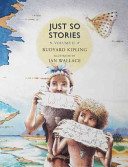Ian Wallace
3 Reviews
(3)
4-6
Illustrated by
Ian Wallace.
In watercolor, crayon, pastel, and chalk, Wallace's soft and evocative illustrations use thematic colors, repeated visual allusions, and a playful appreciation for Kipling's wit and wordplay to deepen the pleasure of these famous tales. Wallace highlights the range of geographic and cultural settings of the six stories to create a pictorial palette as wide-ranging as the topics of the tales.
Reviewer: Megan Lynn Isaac
(3)
4-6
Illustrated by
Ian Wallace.
Wallace's colorful illustrations breathe new life into six of Kipling's famous tales. The evocative and fanciful language that has long made "The Elephant's Child," "How the Camel Got His Hump," and "How the Leopard Got His Spots" (among others) popular is well matched by the glowing landscapes and gentle facial expressions Wallace presents using watercolor, crayon, pastel, and chalk.
Reviewer: Megan Lynn Isaac
(3)
K-3
Illustrated by
Ian Wallace.
The lyrics of Lightfoot's 1967 song about the history of the Canadian railroad are here illustrated with expansive pastels. Wallace's pictures display the unspoiled natural world, the encroachment of industrialization, and its effects on workers and indigenous people. Extensive endnotes explain the symbolism and history of each illustration. Music for the song and a brief history of the railroad are included. Reading list.
Reviewer: Miriam Steinberg-Egeth
3 reviews
We are currently offering this content for free. Sign up now to activate your personal profile, where you can save articles for future viewing.





